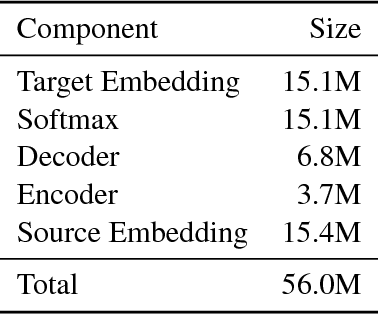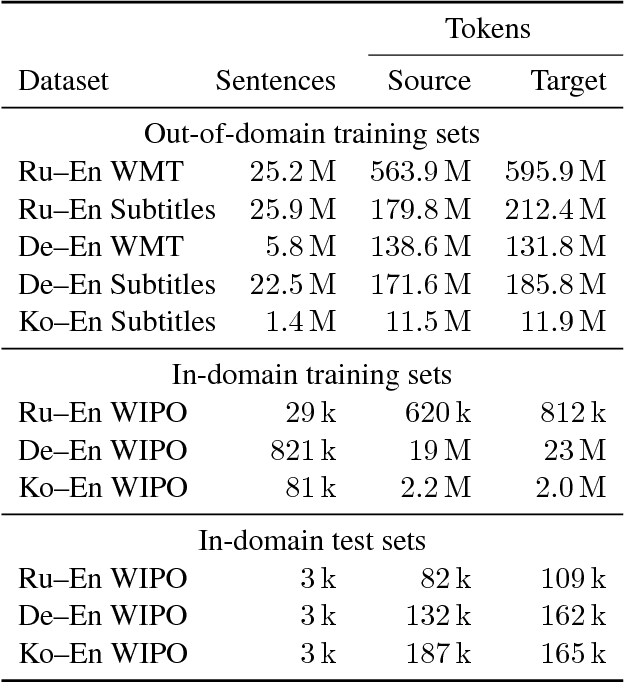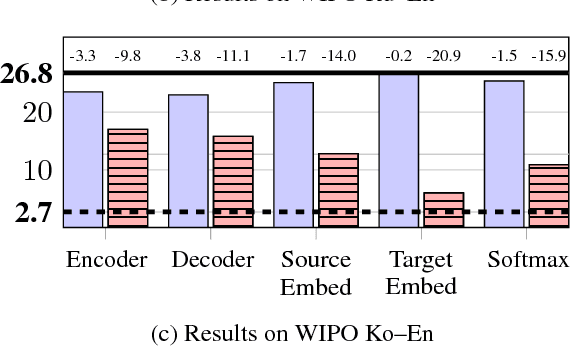Freezing Subnetworks to Analyze Domain Adaptation in Neural Machine Translation
Paper and Code
Sep 14, 2018



To better understand the effectiveness of continued training, we analyze the major components of a neural machine translation system (the encoder, decoder, and each embedding space) and consider each component's contribution to, and capacity for, domain adaptation. We find that freezing any single component during continued training has minimal impact on performance, and that performance is surprisingly good when a single component is adapted while holding the rest of the model fixed. We also find that continued training does not move the model very far from the out-of-domain model, compared to a sensitivity analysis metric, suggesting that the out-of-domain model can provide a good generic initialization for the new domain.
* to be presented at WMT 2018
 Add to Chrome
Add to Chrome Add to Firefox
Add to Firefox Add to Edge
Add to Edge